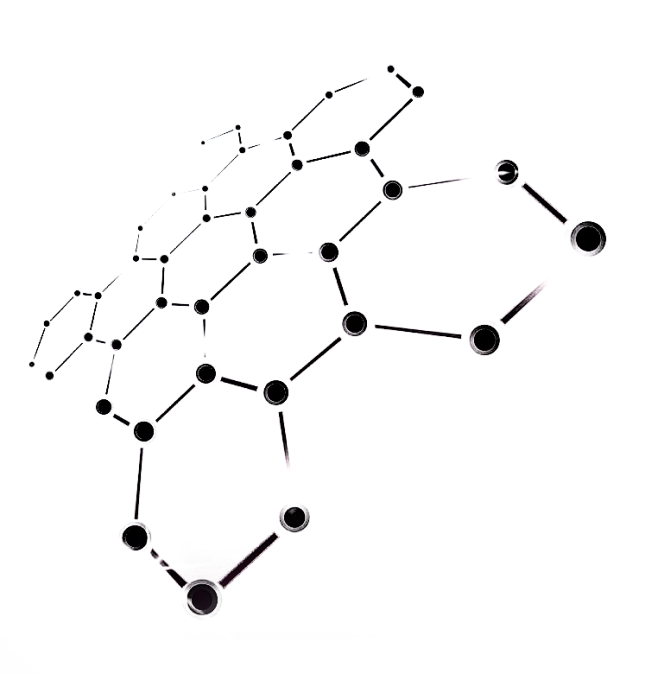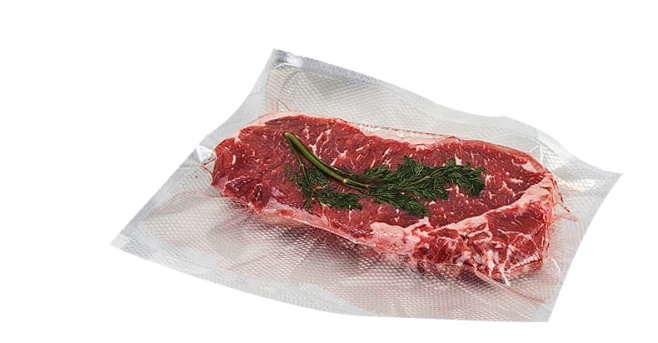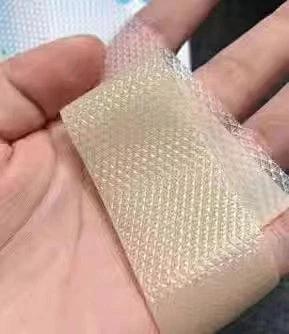05
2025
-
08
Applications of nanotechnology in thin films
Author:
Chinafilm Group
I. Introduction: Challenges and Innovative Opportunities for Thin Film Materials
In modern industry, technology, medicine, and daily life, thin film materials play an increasingly important role. They are widely used in packaging, electronic devices, photovoltaic components, biomedicine, building decoration, food preservation, and other fields. However, with the increasing demands on the performance of thin films, the limitations of traditional material systems in terms of strength, thermal stability, barrier properties, optoelectronic properties, controlled release, and biocompatibility are becoming increasingly apparent.
The rapid development of nanotechnology has provided new ideas and pathways for upgrading the performance of thin film materials. By introducing nanoparticles, fibers, layered materials, or nanostructures into traditional thin film systems, the structure, interface, and molecular motion of the thin film can be controlled at the microscopic scale, significantly improving its mechanical, thermal, barrier, optical, electrical, and biological properties.
This study aims to systematically review the typical application mechanisms and performance enhancement pathways of nanotechnology in thin films, and to explore its broad prospects in various industries through case studies and data analysis.
II. Overview of Nanomaterials: Microscopic Basis of Structure and Function

2.1 Definition and Basic Characteristics of Nanomaterials
Nanomaterials generally refer to functional materials with particle sizes between 1~100 nanometers. Due to their extremely high specific surface area, quantum size effect, complex surface atomic structure, and interface effects, they exhibit many novel physical, chemical, and biological properties that differ from macroscopic materials.
Main characteristics include:
- Surface effect: Large specific surface area, high activity, easy to form strong interfaces with polymer matrix.
- Size effect: Exhibit unique electrical, magnetic, and optical properties at the microscopic scale.
- Interface effect: Plays a decisive role in the overall performance of composite materials.
- Quantum effect: Causes non-linear changes in band structure and electrical conductivity.
·
2.2 Classification of Commonly Used Nanomaterials
Type | Example | Main Performance Contribution |
Inorganic Nanoparticles | TiO₂, ZnO, SiO₂, Ag, Au | Photocatalysis, antibacterial, heat resistance, flame retardancy, UV resistance |
Layered Silicates | Montmorillonite ( MMT), bentonite | Gas barrier properties, mechanical enhancement, adsorption |
Carbon-based Nanomaterials | Graphene, Carbon Nanotubes ( CNT) | Conductivity, thermal conductivity, mechanical strength |
Polymer Nanoparticles | Polylactic acid nanospheres, microcapsules | Controlled release function, biodegradability, biocompatibility |
Nanocellulose | CNF, MFC, TOCN | Mechanical enhancement, good transparency, biodegradable |
III. Mechanism Analysis of Nanotechnology Enhancing Thin Film Performance
3.1 Enhanced Mechanical Properties
The addition of nanoparticles can act as fillers and strengtheners, forming multiple physical cross-linking and chemical bonding with the polymer matrix:
- Hinder the sliding of polymer chains, improve modulus and strength.·
- Filler - Matrix interface effect improves crack propagation resistance.·
- Such as nano SiO ₂added to polypropylene ( PP ) thin film, can increase tensile strength 50% and above.

3.2 Barrier Property Optimization
Nanomaterials can construct a complex “maze effect” ( tortuous path ) structure, extending the permeation path of gas or water molecules, and significantly improving the barrier properties:
- Montmorillonite nanosheets form a layered barrier in polyamide, reducing water vapor transmission rate by 80%。
- The two-dimensional structure of graphene is inherently impermeable and is widely used in high-barrier packaging films.
3.3 Improved Thermal Stability
By adjusting the heat conduction path and crystal structure through nanomaterials:
- Nano ZnO 、 TiO ₂can improve heat resistance and inhibit polymer thermal decomposition.
- Nanometal particles improve thermal conductivity, which is beneficial for thermal management films.
3.4 Optical and Optoelectronic Property Control
Nanostructures have significant effects on light scattering, absorption, and interference:
- Nano Ag enhances the conductivity and transparency of transparent conductive films.
- Nano TiO ₂used in UV blocking coatings to prevent UV aging.

3.5 Surface Function Expansion (Antibacterial, Antifouling, Self-Cleaning)
- Nano Ag 、 ZnO Possesses broad-spectrum antibacterial properties.
- Nano SiO ₂Constructing a micro-nano composite rough structure can achieve a superhydrophobic self-cleaning effect.
- It has great application potential in medical packaging and food preservation films.
3.6 Integrated intelligent response function
- Temperature response: such as PNIPAM Nanocapsule controlled-release film.
- pH Response: drug delivery film.
- Electromagnetic response: intelligent dimming film.
IV. Specific Application Case Analysis

4.1 Barrier property improvement in food packaging films
Studies have shown that introducing PVA ) base film, the oxygen permeability can be reduced to 2 wt% montmorillonite nanosheets into polyvinyl alcohol ( 1/10 of the original, greatly extending the shelf life of food.
Case: A certain bio-packaging company uses MMT-PLA composite film for fresh meat packaging, and the preservation time under refrigeration is increased from 3 days to 8 days, and the total amount of waste is reduced 40%。

4.2 Development of medical antibacterial films
Nanosilver ( AgNPs ) is uniformly dispersed in polyurethane ( PU ) film to prepare an antibacterial film for wound dressings. The killing rate of Staphylococcus aureus and Escherichia coli exceeds 99%。
Application scenarios: Hospitals use it for post-operative wound dressing and antibacterial coating of catheters.


4.3 Flexible electronic device films
Graphene-based transparent conductive films ( GTCF ) have gradually replaced OLED in bendable touch screens and flexible ITO :
- Conductivity reaches 10 ⁴ S/cm。
- Transmittance > 90%。
- Bending 5000 times, the performance remains >90%。
4.4 Photovoltaic encapsulation film
In EVA (ethylene - vinyl acetate), adding nano TiO ₂and SiO ₂, not only improves the blocking ability of ultraviolet rays, but also improves the modulus and stability, which helps to improve the service life of solar cells.
4.5 Wrapping film
In LLDPE Adding 2wt% modified montmorillonite to the wrapping film can increase the puncture resistance by about 40% , and the tensile strength is increased by 20% above
V. Key Preparation Technologies and Structural Control Strategies

5.1 In-situ polymerization technology
Nanoparticles are gradually generated and uniformly distributed during the polymerization process, suitable for preparing composite films with uniform structure and strong compatibility.
5.2 Solution blending and casting method
Suitable for water-soluble or organic solvent systems, easy for large-scale industrialization, but requires high requirements for the dispersion stability of nanoparticles.
5.3 Electrospinning preparation of nanofiber membranes
Can construct porous structures, suitable for filtration, tissue engineering scaffolds, etc.
5.4 Layer-by-layer self-assembly ( LbL )
Constructing a layered structure through charge adsorption is suitable for fine-tuning barrier and responsiveness, especially for gas selective membranes.
VI. Challenges and Solutions
Challenges | Countermeasures |
Nanoparticle agglomeration | Surface modification (such as grafting, coating), ultrasonic dispersion |
Poor polymer compatibility | Surface active agent or coupling agent modification |
High cost of nanomaterials | Explore renewable sources, simplify synthesis processes |
Difficulty in scaling up to industrial production | Develop casting composite, blown film, co-extrusion and other technologies |
Insufficient environmental and health impact assessment | Establish a safety evaluation system for nano-films |
VII. Future Development Trends

7.1 Multifunctional integration
Developing towards the integrated direction of "structure-performance-function", realizing multi-functional synergy such as mechanical enhancement, antibacterial properties, barrier properties, and sensing response.
7.2 Sustainable Development and Green Nanomaterials
Developing green nanomaterials such as degradable nanocellulose and starch nanoparticles for biodegradable packaging and environmentally friendly medical films.
7.3 Commercialization of Smart Responsive Films
Used in wearable medical devices, smart sensors, and drug delivery systems, with temperature, humidity, light, PH , and electric field response functions.
7.4 Integration with Artificial Intelligence and Big Data
Through AI Modeling and predicting the relationship between the structure and performance of nanomaterials, optimizing combination design, and improving R&D efficiency.
VIII. Conclusion
Nanotechnology, as 21 one of the most disruptive sciences of the century, is constantly reshaping the structural and performance boundaries of film materials. From traditional mechanical enhancement and barrier improvement to optical control, intelligent response, antibacterial properties, self-repair, and green degradability, nanotechnology is driving film materials towards a more high-end, refined, green, and intelligent era.
With the gradual reduction in the cost of nanomaterials, the gradual maturity of processing technology, and the continuous improvement of environmental safety systems, nanofilms will show broader application prospects in packaging, electronics, biomedicine, new energy, and environmental protection in the future. Mastering the core principles and engineering practices of nanotechnology will become the key to the upgrading and transformation of the film materials industry.
Disclaimer
Chinafilm Company's official website, WeChat official account, Xiaohongshu, Douyin, and all other platform materials (including but not limited to text, hyperlinks, and other materials) are for general reference only and do not constitute any professional opinions, suggestions, invitations, solicitations, product quality standards, etc., and should not be used to make decisions (whether investment or other decisions). Chinafilm does not make any representations or warranties as to the reliability, accuracy, or completeness of the information contained herein. Before making any decisions based on the above information, it is recommended to seek independent advice from appropriate professionals. Chinafilm expressly states that it shall not be liable for any use or interpretation of any of the above information by others.
If you find that the official website, WeChat official account, Xiaohongshu, Douyin, and all other platform materials of our company contain content that uses your rights without authorization, please contact us in time, and we will take corresponding measures to deal with it.
Nanotechnology,Thin film,Innovation,Science and technology
Previous
Previous
Latest News
2025-08-05
Applications of nanotechnology in thin films
Chinafilm Group aims to systematically analyze the typical application mechanisms and performance improvement pathways of nanotechnology in thin films. Combining case studies and data analysis, it explores its broad prospects in various industries.
2025-08-01
Army Day|Salute to the People's Liberation Army of China
Chinafilm Group pays tribute to the Chinese People's Liberation Army
2025-07-30
Nano-wrapped film: The engine of a new era of high-performance packaging
Chinafilm Group will provide a comprehensive and systematic introduction to the fundamental theory, key properties, material composition, preparation process, typical applications, current challenges, and future development direction of nano-wound film, helping readers gain a comprehensive understanding of the technical core and market potential of this disruptive material system.
2025-07-24
Research and Application of a Novel Soft Pouch Film
Chinafilm Group provides a comprehensive analysis of the new soft pouch film industry, covering its definition, core technologies, performance advantages, practical applications, typical cases, and future trends. This analysis offers a systematic cognitive framework and practical reference for material developers, packaging designers, brand owners, and end-users.
2025-07-23
Development and Prospect of Biodegradable Film Materials
Chinafilm Group will delve into the definition, types, R&D progress, application fields, and future development trends of biodegradable film materials, aiming to provide valuable reference for industry practitioners, researchers, and policymakers.

